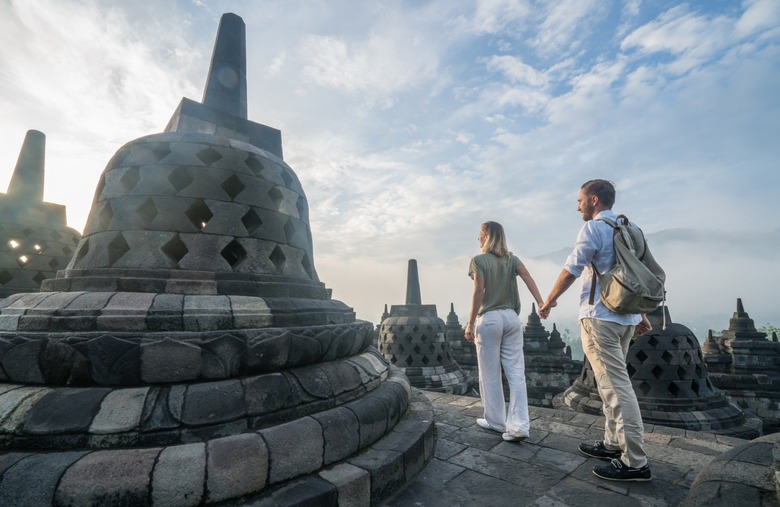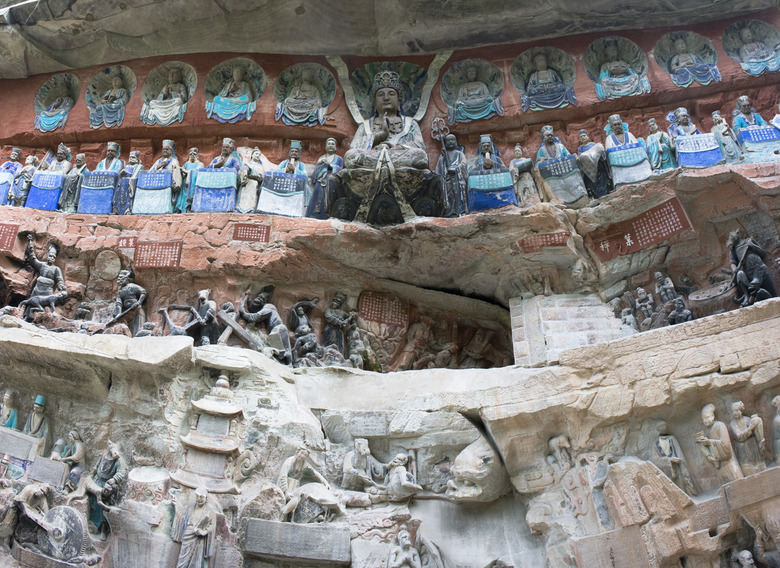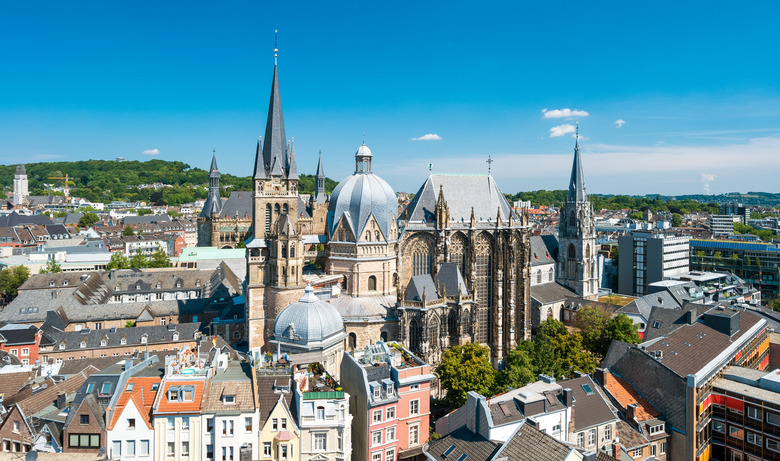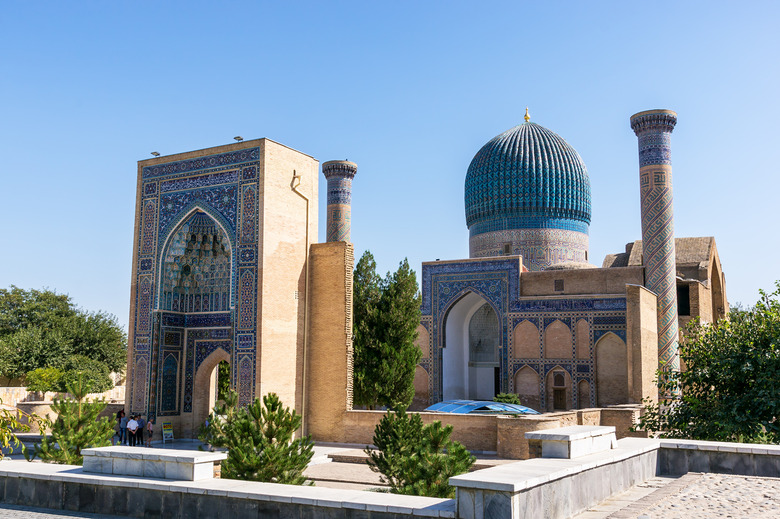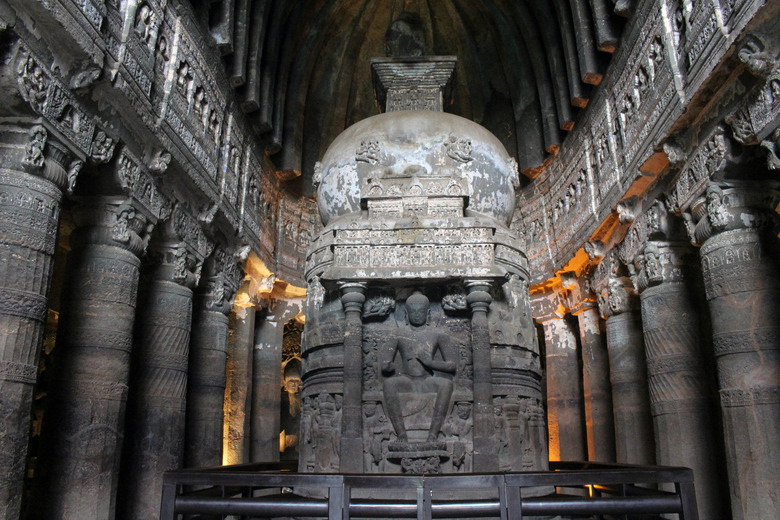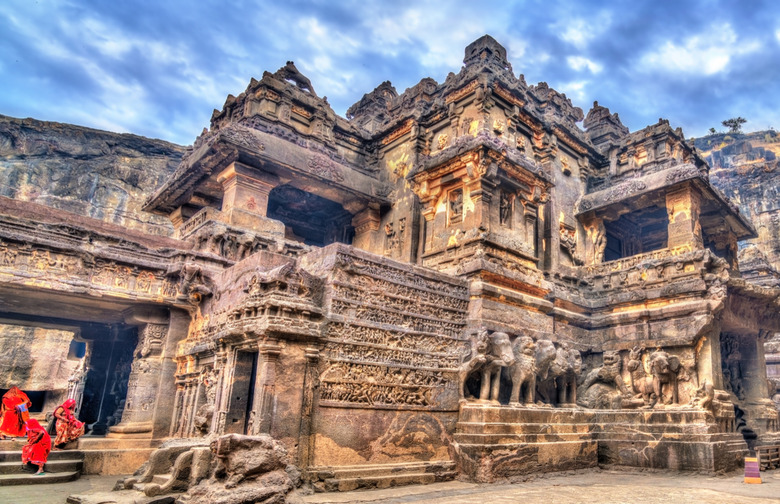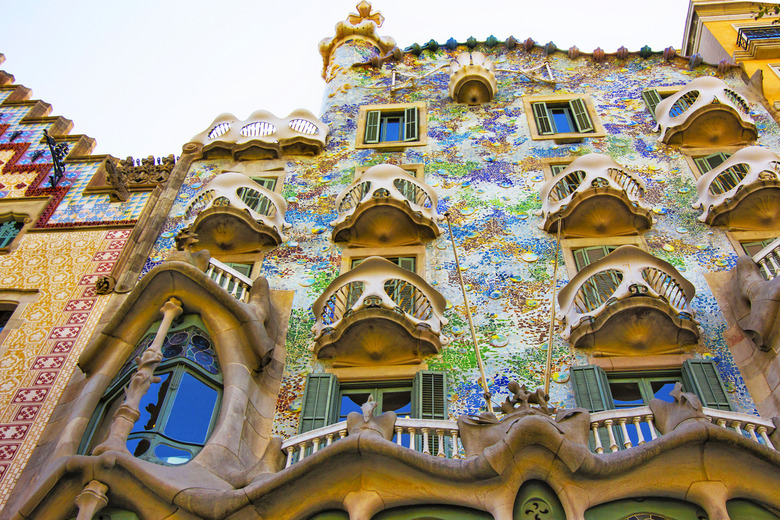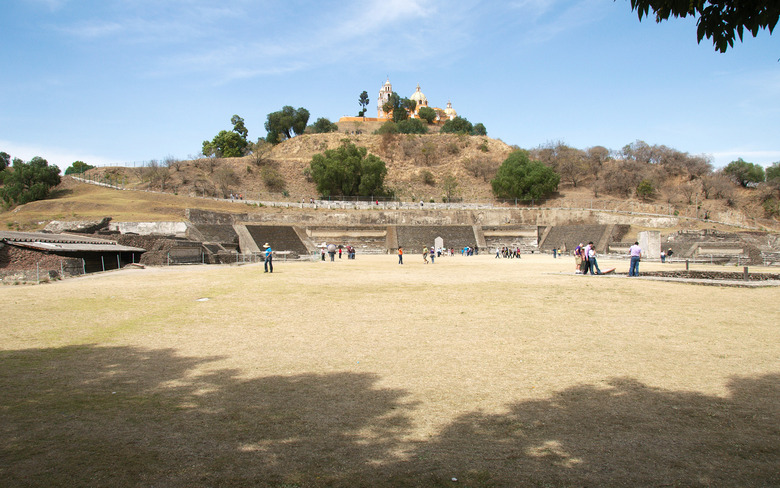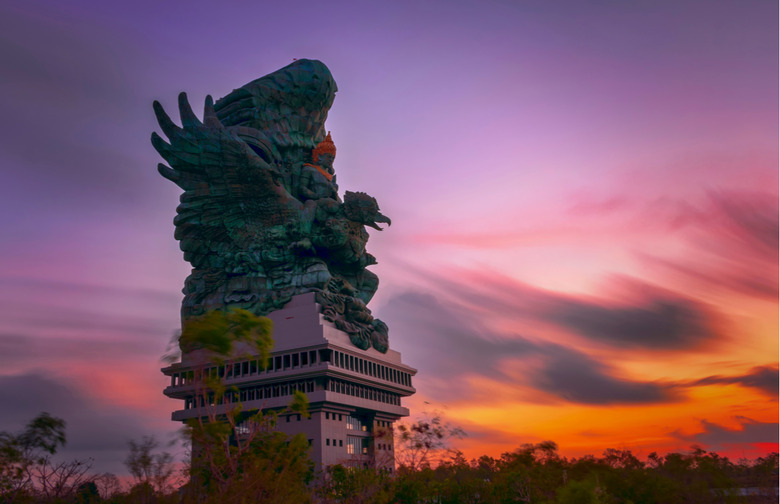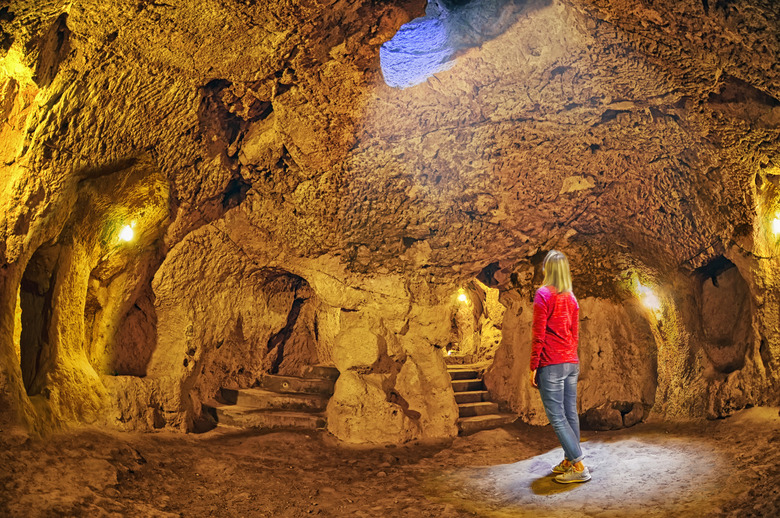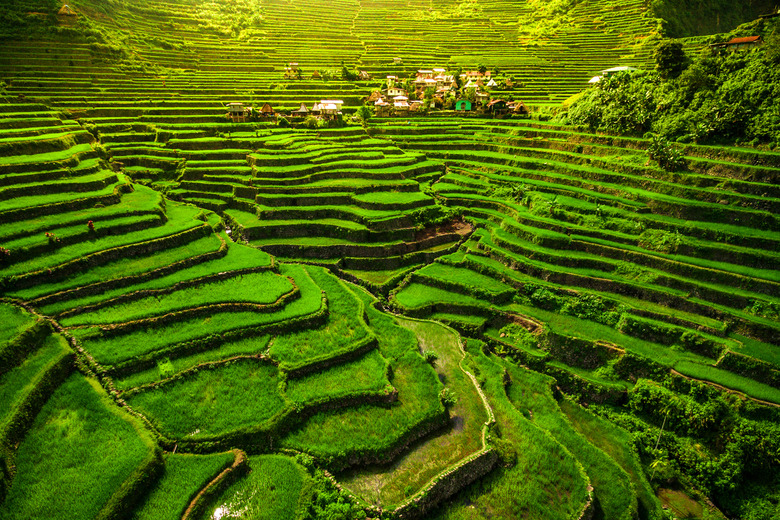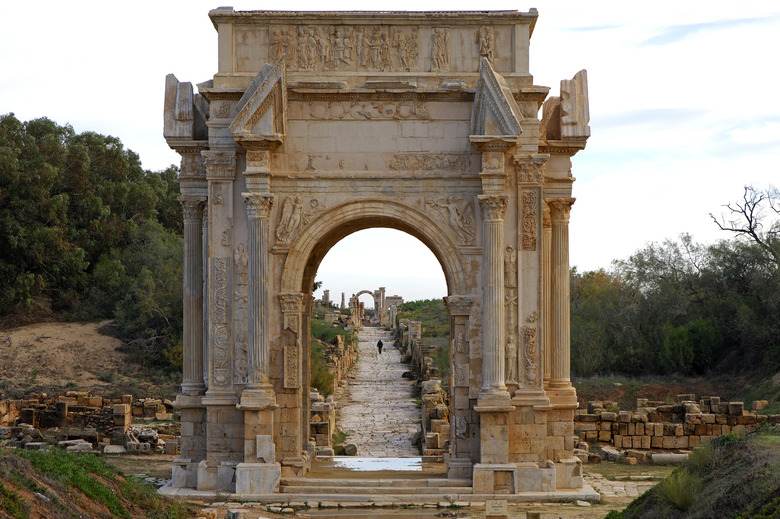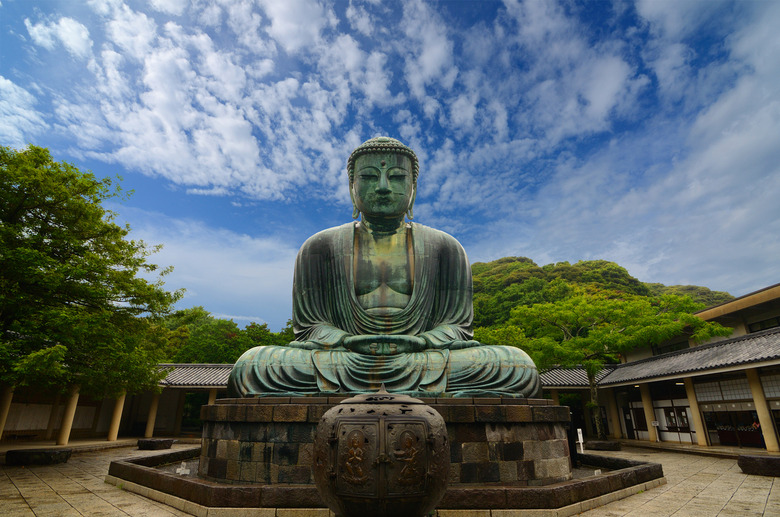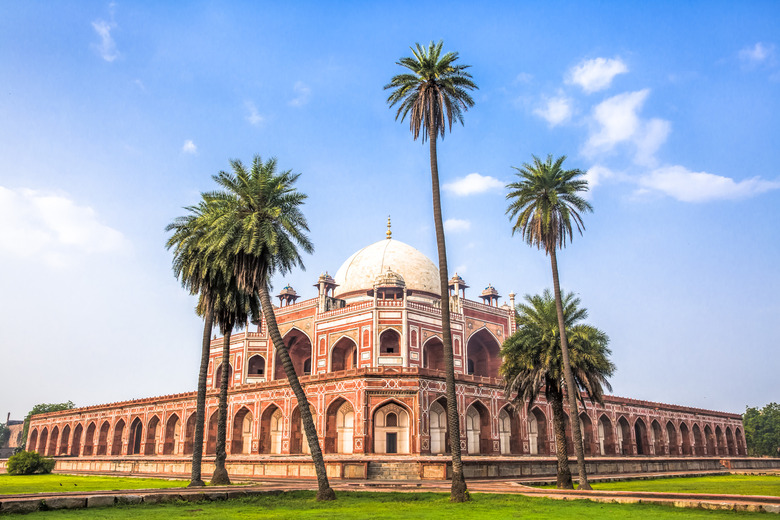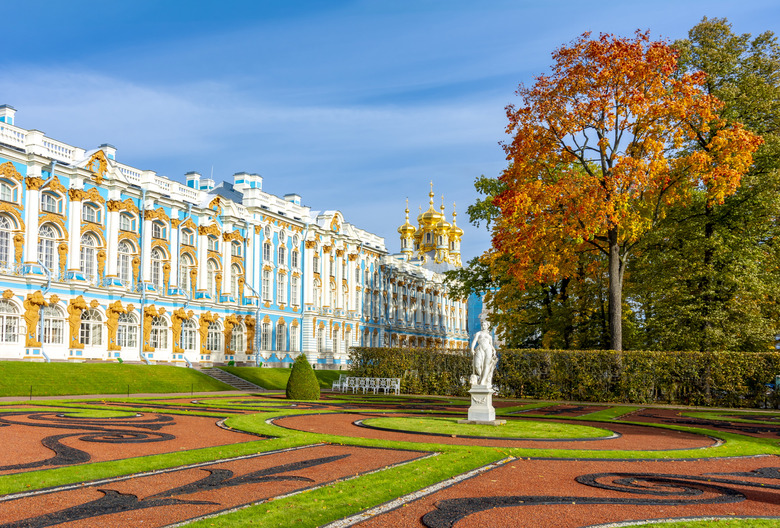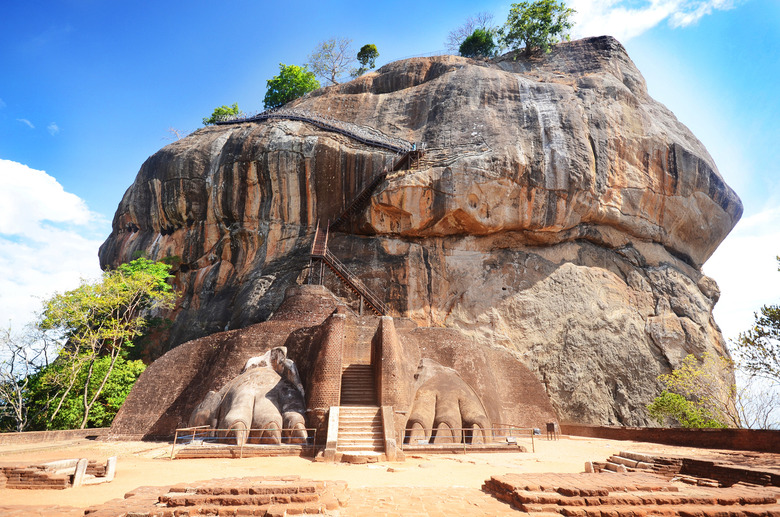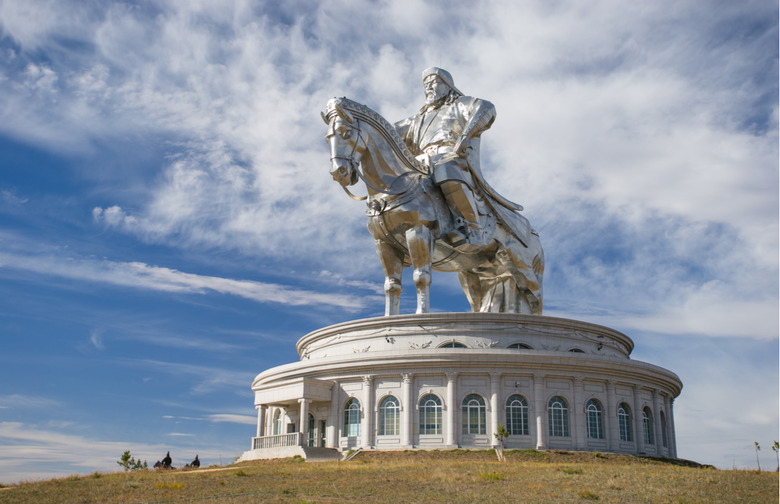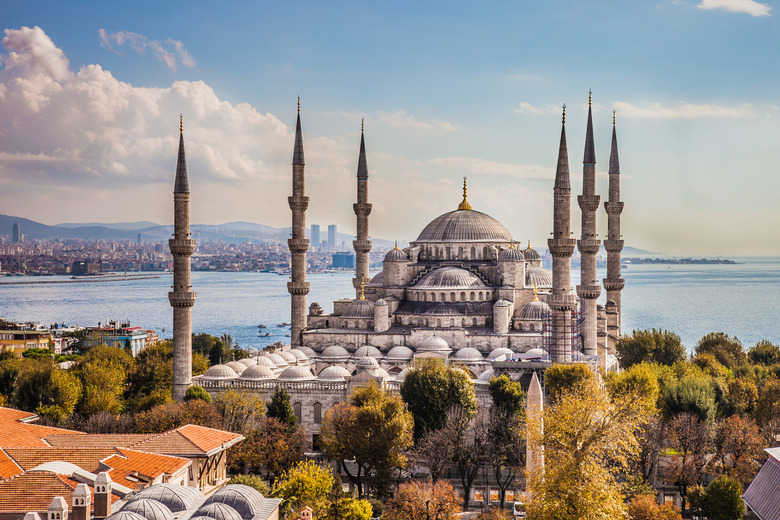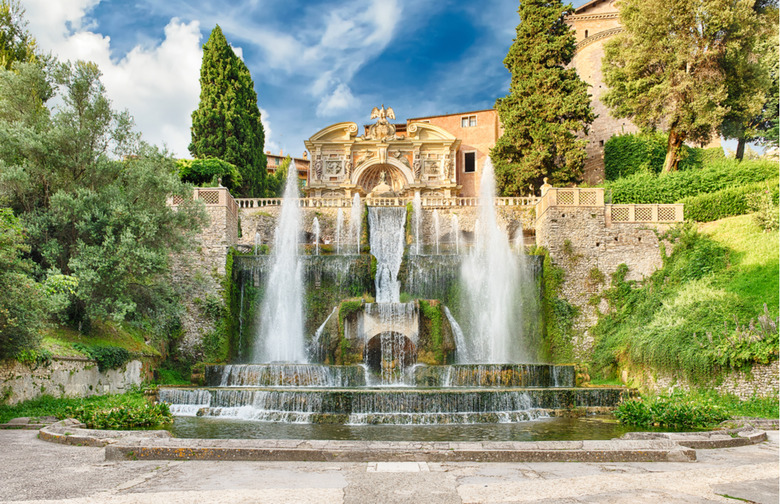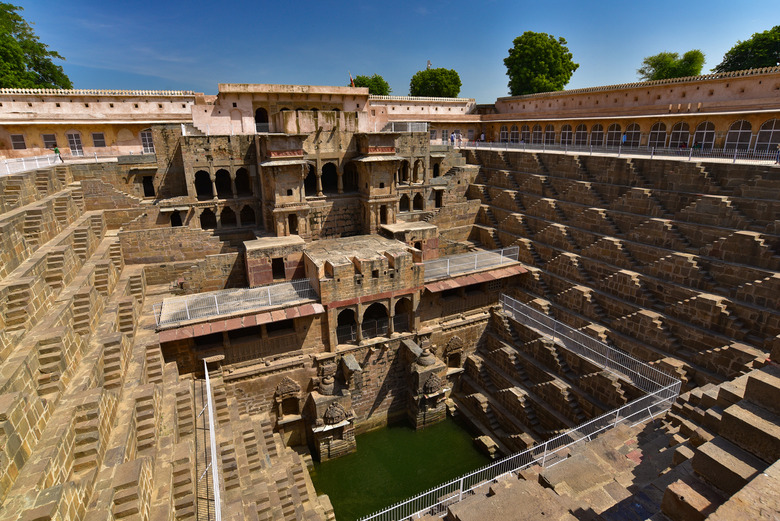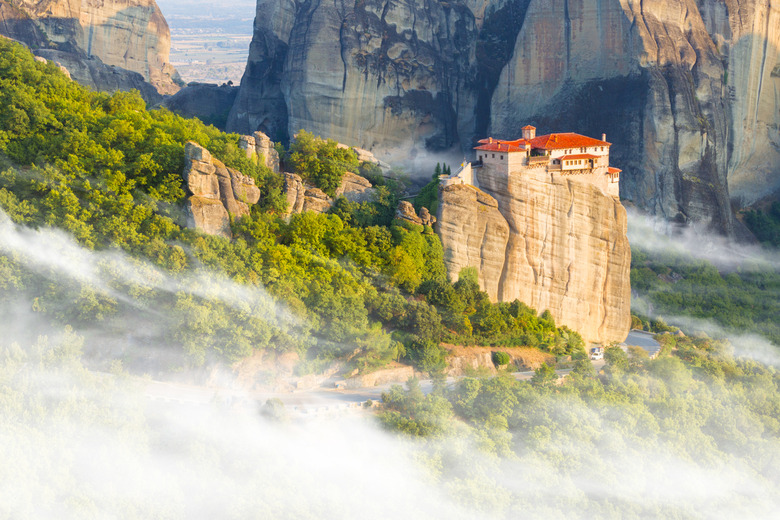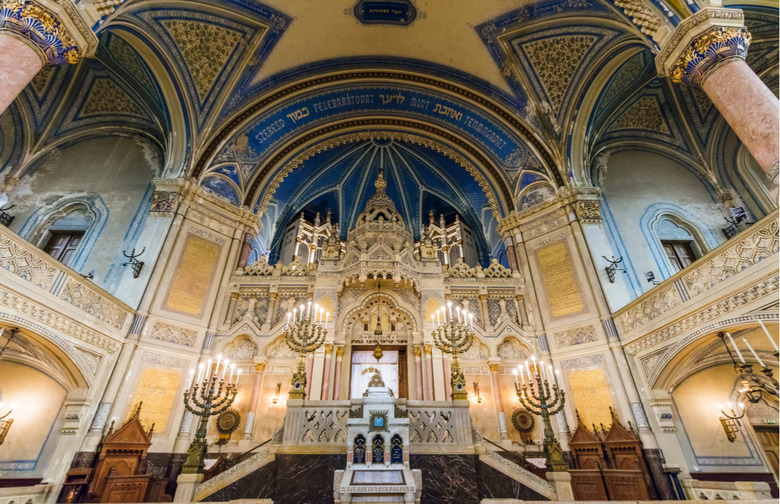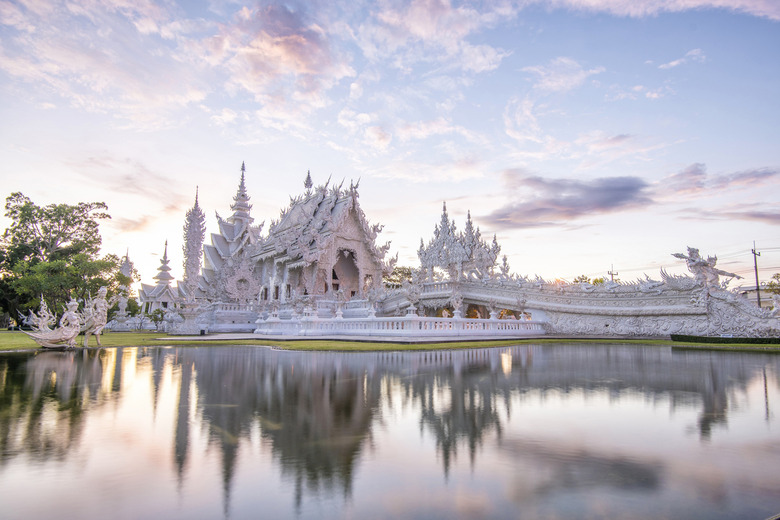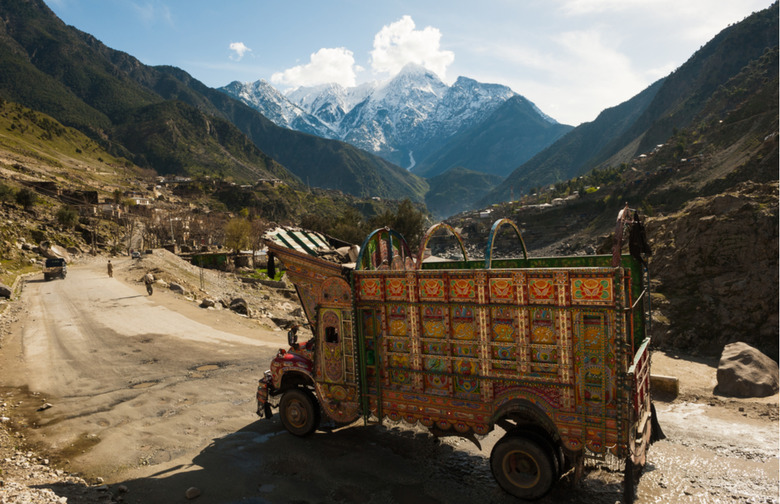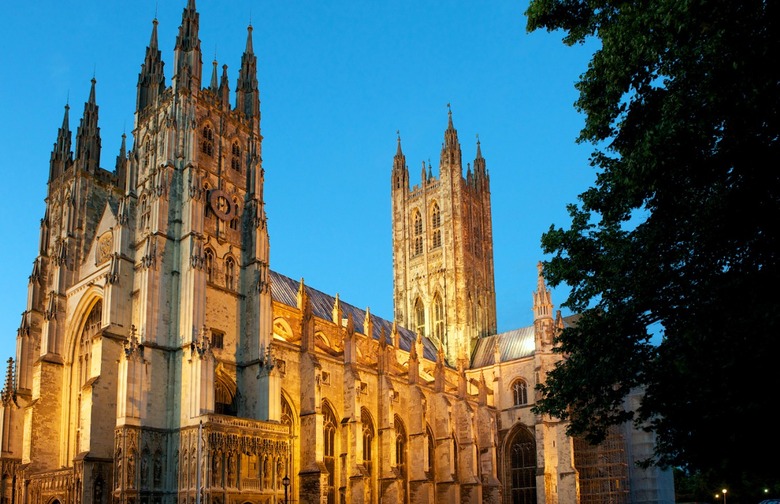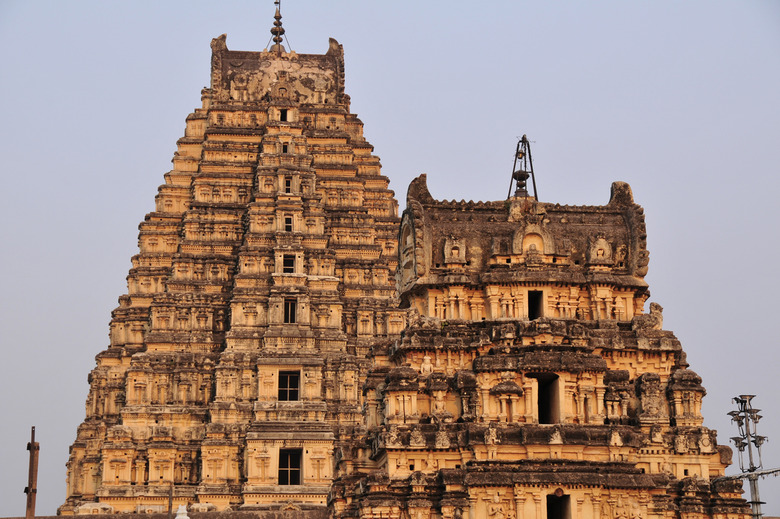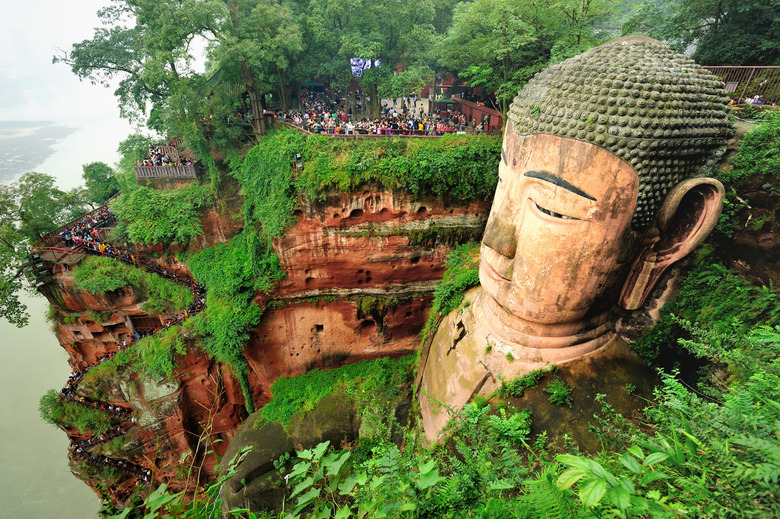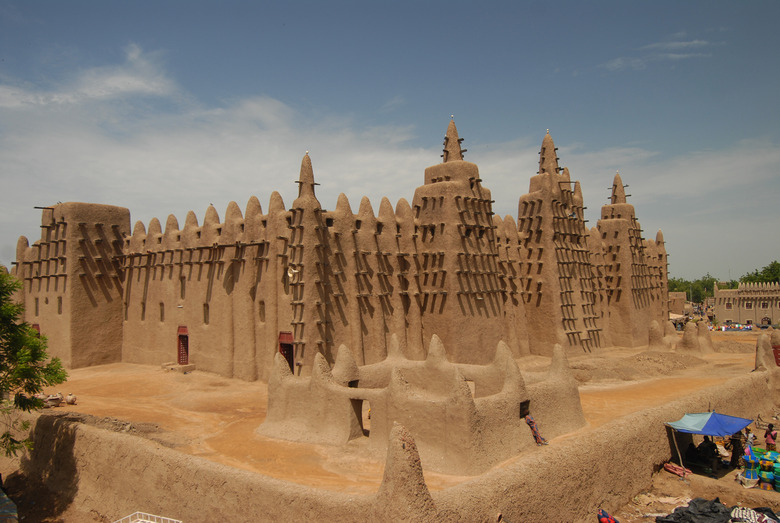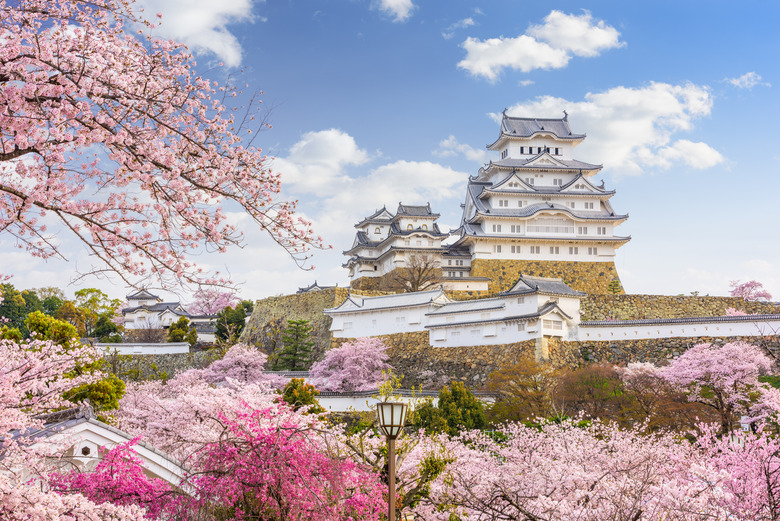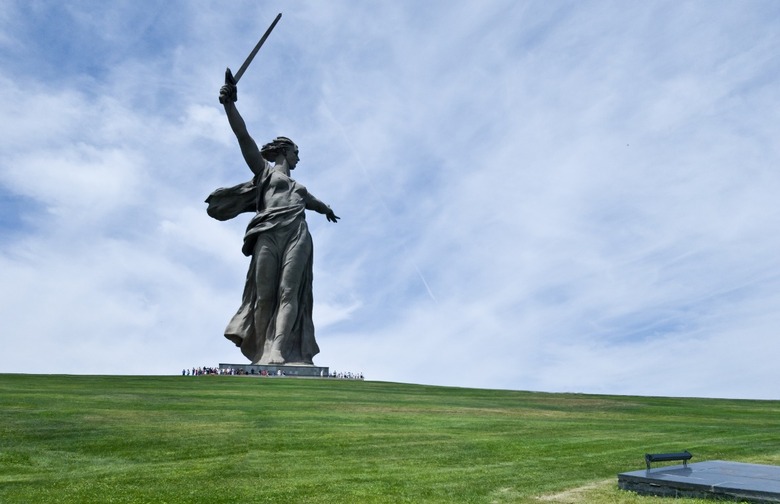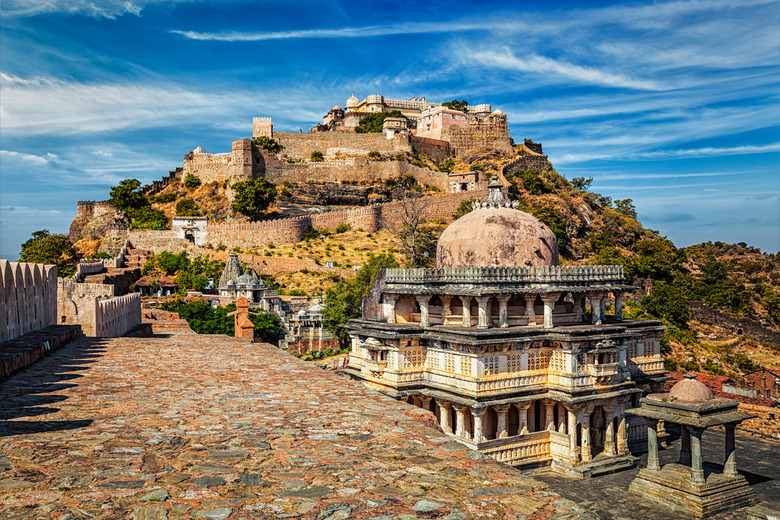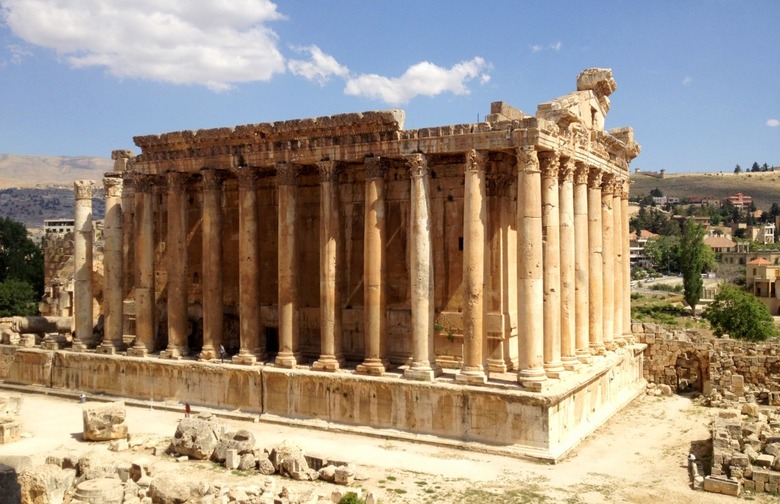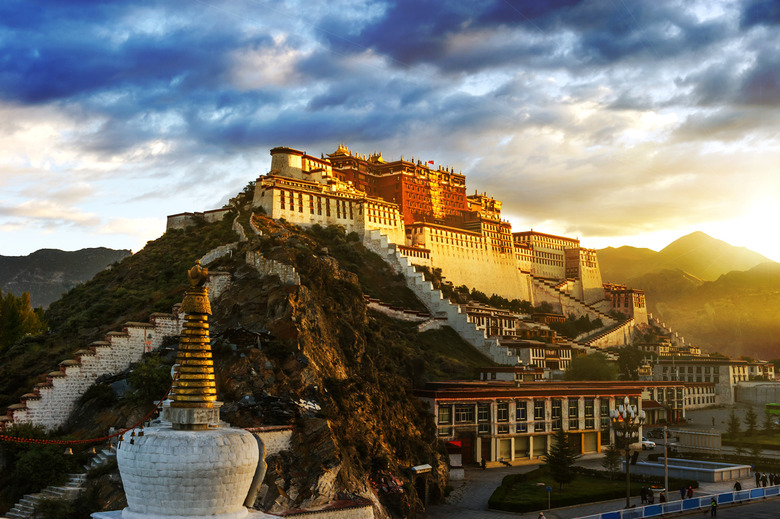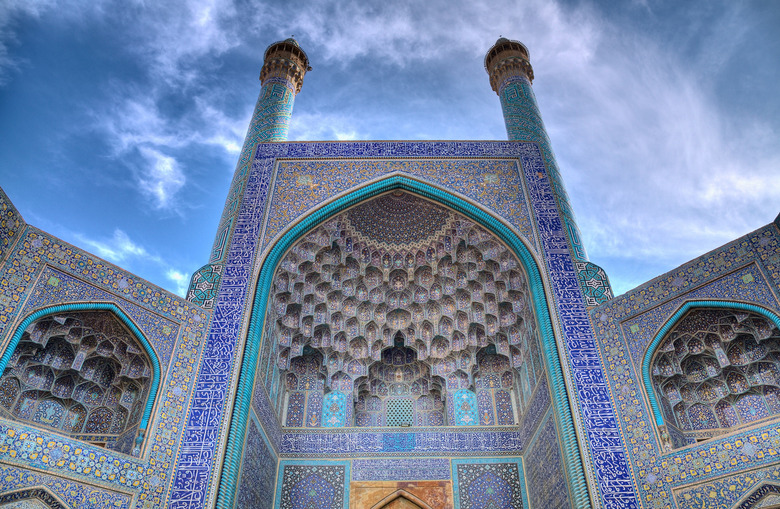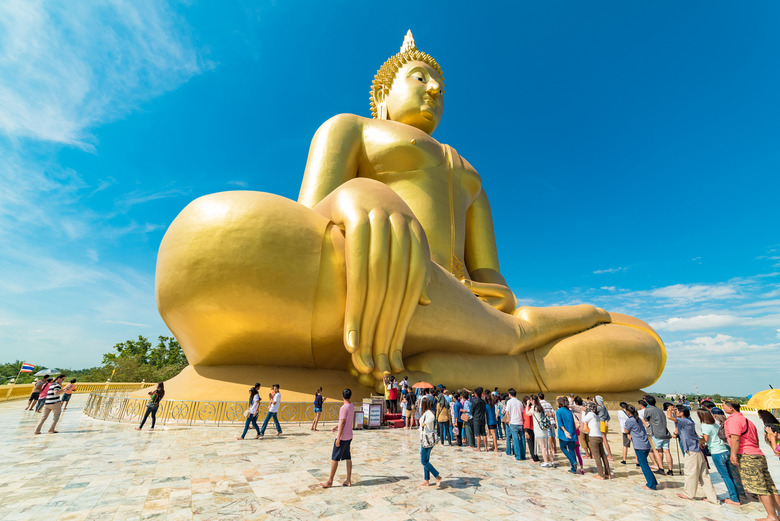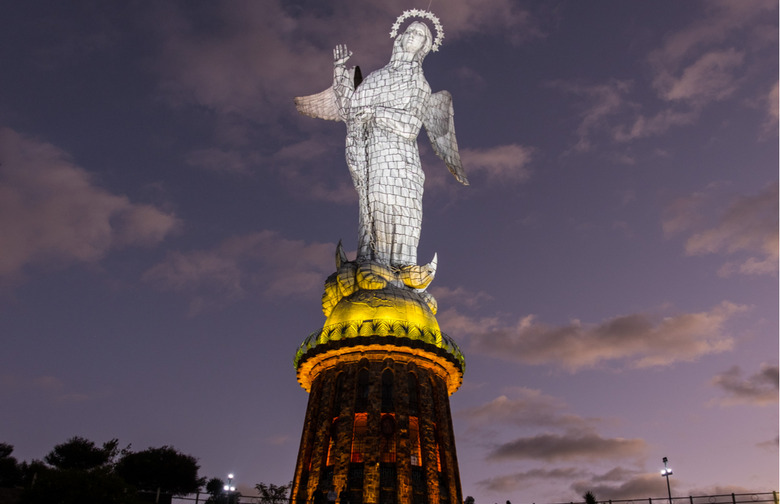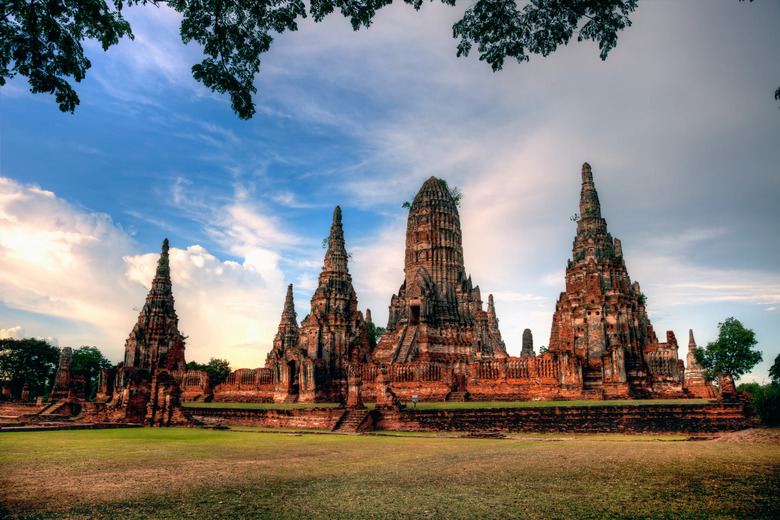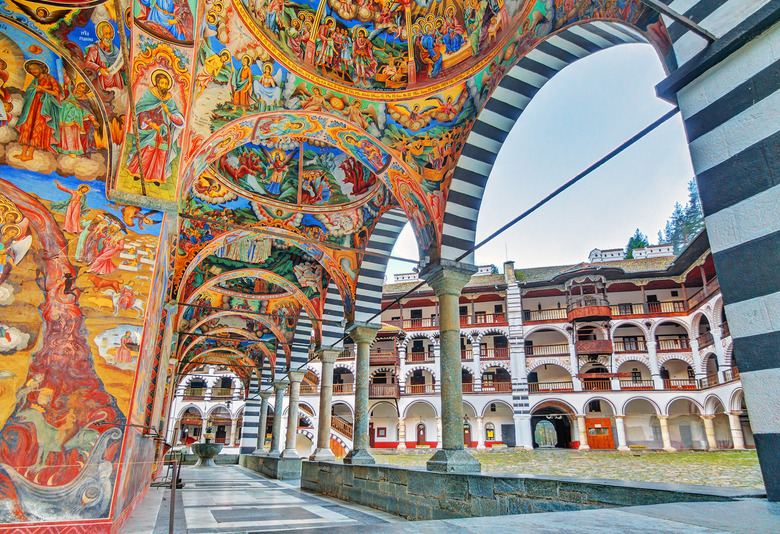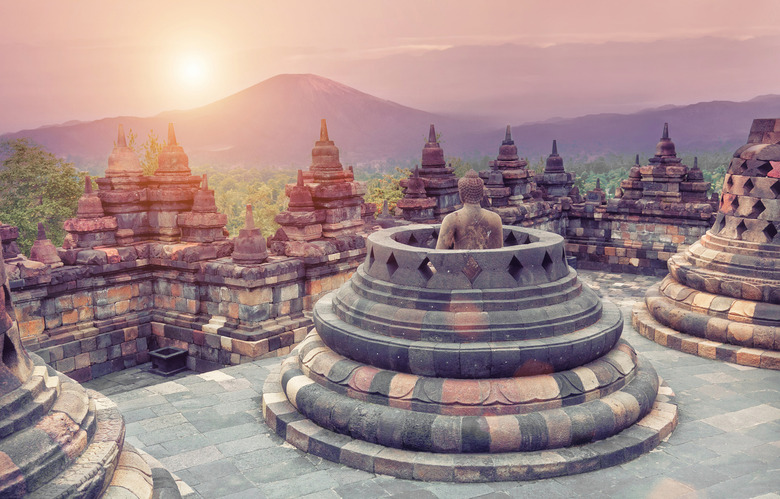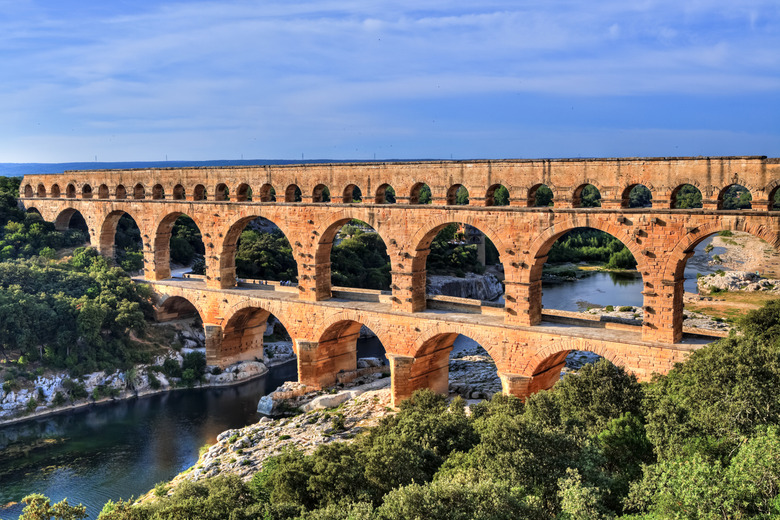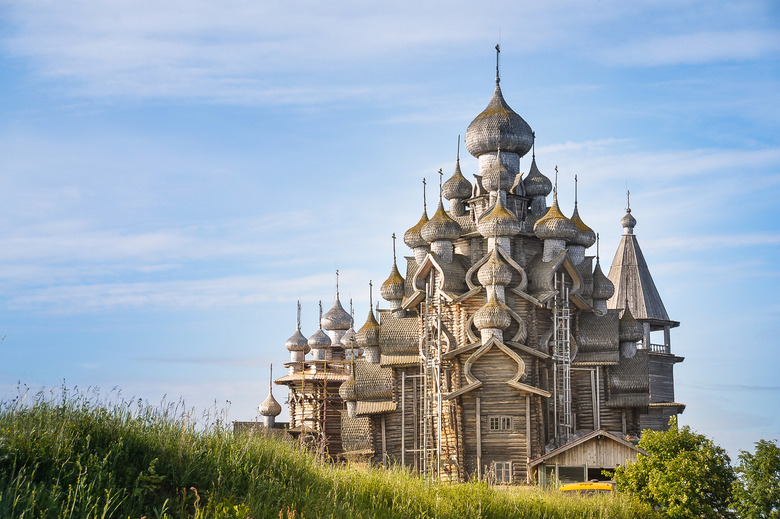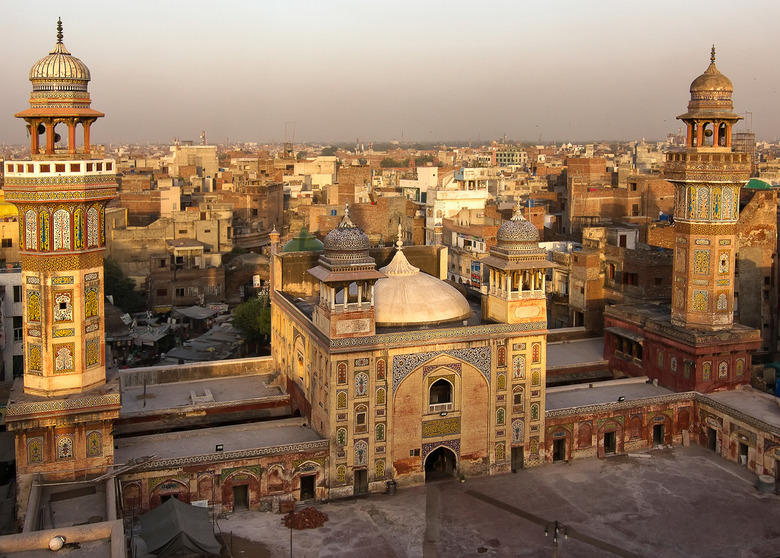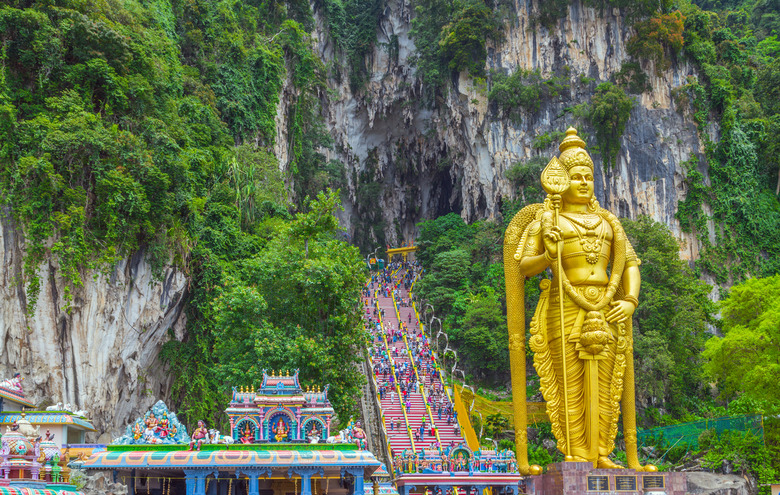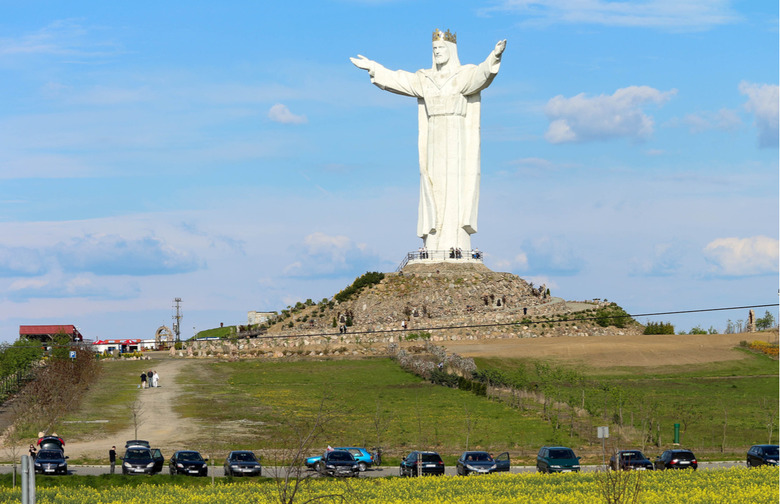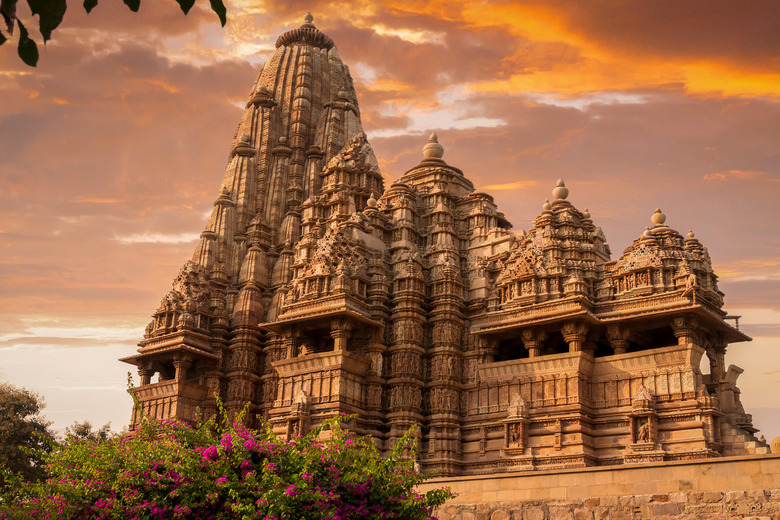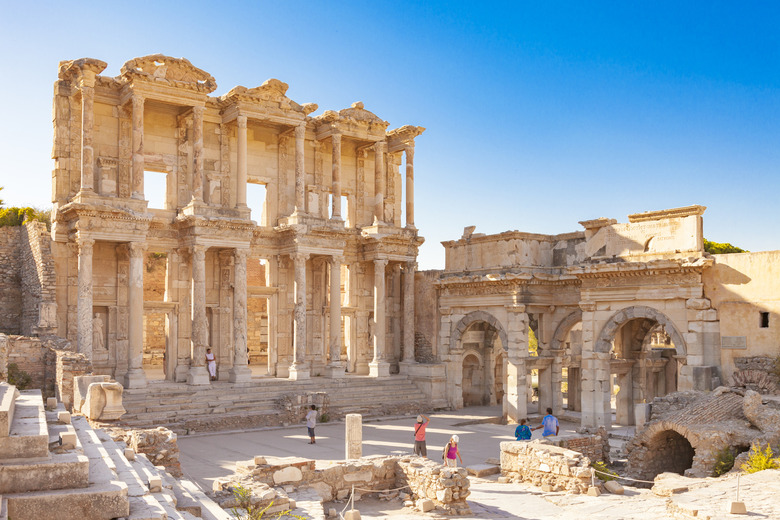50 Undiscovered Wonders Of The World
Most history and travel enthusiasts are familiar with the Seven Wonders of the Ancient World, as well as the New Seven Wonders of the World. There's a lot more to be explored around the world, however, than bucket list landmarks and overrated tourist spots.
Humans all over the globe have achieved impressive feats of architecture and engineering throughout history, and if you only consider traveling to the most popular countries and trending destinations, you risk missing out on some marvelous sites. Perhaps familiar to locals, these unbelievable temples, well-preserved ancient cities and breathtakingly grand palaces and statues don't get the attention they deserve from American travelers, who can learn a lot from these 50 undiscovered wonders of the world.
Dazu Rock Carvings
Travel outside the popular spots like Beijing and Shanghai, and instead visit the southwestern Chinese city of Chongqing to see the Dazu Rock Carvings, a collection of religious sculptures dating back as far as the seventh century and incorporating Buddhist, Confucian and Taoist influences. The monument complex is made up of 75 protected sites with about 50,000 statues, some of which are rock-cut cave shrines while others are reliefs carved into rock faces.
Aachen Cathedral
Located in present-day western Germany and consecrated in 805, Aachen Cathedral is one of Europe's oldest and was built under the orders of Charlemagne. The Holy Roman Emperor was buried here after his death in 814, and the cathedral also served as the coronation site for 31 kings and 12 queens of Germany between the years of 936 and 1531. Built mainly in the Carolingian-Romanesque and Gothic styles, with a bit of Ottonian influence, the church's interior is even more intricately detailed than its exterior and notably contains the throne of Charlemagne.
Gur-e-Amir
Just as the Turco-Mongol Persianate conquerer Timur, also known as Tamerlane, was the forebear of his great-great-great-grandson Babur, founder of the Mughal Empire of South Asia, so was his mausoleum the precursor for the world-famous Mughal architecture that came after it, notably the top bucket list landmark that is the Taj Mahal. The Gur-e-Amir — Persian for "tomb of the king" — is the jewel of Samarkand, the capital of Timur's empire and today the second largest city in Uzbekistan. The temple complex is home to not only his tomb, but also those of his sons and grandsons, as well as his teacher, and is characterized by a large light blue dome as well as intricate geometric patterns inside and out, largely featuring blue, light blue and white tiles.
Ajanta Caves
The Ajanta Caves of Aurangabad district in the western Indian state of Maharashtra are a breathtaking example of ancient Indian art, featuring about 30 rock-cut Buddhist cave monuments dating from the second century B.C. to approximately the year 480 A.D. These ancient monasteries and places of worship were cut directly into a 246-foot rock wall and intricately decorated with paintings and carvings that greatly influenced later religious artwork.
Ellora Caves
Located a little more than 60 miles away from the Ajanta Caves, the artwork of the Ellora Caves dates back to the period between the year 600 and 1000. More than 100 caves were excavated from basalt cliffs to create Hindu, Buddhist and Jain monuments, and 34 are currently open to the public.
Bagan Plains
From the ninth to 13th centuries, Bagan was the thriving capital of the Pagan Kingdom, which first united the regions that make up modern-day Myanmar. The city hosted more than 10,000 Buddhist temples, monasteries, and pagodas during the its heyday between the 11th and 13th centuries; just over 2,200 of them still stand today.
Casa Batlló
Barcelona is an awe-inspiring destination, thanks in great part to the Spanish architect Antoni Gaudí. When you're done marveling at the still-unfinished Sagrada Família, head to the center of the city to see another one of Gaudí's masterpieces. Casa Batlló is a house that was redesigned by the architect in 1904, notable for its irregular windows, lack of straight lines, mosaic-decorated façade, arched roof, and overall skeleton-like structure.
Petra
The ancient city of Petra was likely settled as early as 9000 B.C. and subsequently established as the capital city of the Nabatean Kingdom as early as the fourth century B.C. Known for its impressive water conduit system and absolutely mesmerizing rock-cut architecture, it's been called the Rose City on account of the pink-ish tinge of the sandstone cliffs that many of the city's buildings were carved into.
Great Pyramid of Cholula
The Great Pyramid of Cholula, located in central Mexico, is a huge pre-Hispanic step pyramid and temple complex thought to have been dedicated to the god Quetzalcoatl. Today, a church sits at the top of the pyramid, which looks like a hill from a distance and is the largest pyramid known to currently exist.
Garuda Wisnu Kencana Statue
The tallest statue of a Hindu deity in the world is the Garuda Wisnu Kencana statue on the otherworldly island of Bali. Measuring nearly 400 feet tall, the monument is located in Garuda Wisnu Kencana Cultural Park and depicts Vishnu, one of the main Hindu gods, riding his bird-like mount Garuda in search of Amrita, the elixir of life. Completed in 2018, the statue is Indonesia's tallest and took 28 years to build.
Derinkuyu
A hot air balloon ride in the Cappadocia region of Turkey is an ultimate bucket list experience, but what you can find far below ground is just as amazing. Going as far as 200 feet deep, Derinkuyu is an ancient underground city; it was completed during the Byzantine era, but some of the caves date as far back as the eighth and seventh centuries B.C. The underground complex could be sealed off from attackers with heavy stone doors, and thousands of people could shelter inside along with livestock and food.
Banaue Rice Terraces
Having been carved into mountains by the ancestors of the indigenous Ifugao people, the Banaue Rice Terraces of the Philippines look like something from another planet. The terraces, which are believed to have largely been carved by hand, are fed by an irrigation system from the rainforests located above them, and rice and vegetables are still planted on them today.
Leptis Magna
The ruins of Leptis Magna, an ancient city that existed under the Carthaginian Empire and Roman Libya, are located a little over 80 miles east of Tripoli in the city of Khoms. One of the best-preserved Roman sites in the Mediterranean, it includes the remains of a Roman theater, amphitheater, marketplace, forum and an impressive triumphal arch known as the Arch of Septimius Severus, named after the Roman emperor and Leptis Magna native who commissioned it.
Great Buddha of Kamakura
An iconic Japanese monument, the Great Buddha of Kamakura can be found at the Kōtoku-in Temple, a Buddhist temple located in the city of Kamakura. The nearly 44-foot-tall bronze statue depicts Amitābha Buddha and is estimated to have been erected in 1252.
Humayun’s Tomb
The 16th-century tomb of Mughal emperor Humayun in the infinitely Instagrammable city of Delhi was actually modelled after Samarkand's Gur-e-Amir and greatly influenced subsequent Mughal architecture, particularly royal mausolea such as the Taj Mahal. Home to the graves of multiple Mughal emperors and royal family members, the impressive complex is made of the white marble and red sandstone characteristic of Delhi Sultanate architecture, with structures and designs influenced by Central Asian and Persian styles.
Catherine Palace
The Catherine Palace in Tsarskoye Selo, about 15 miles south of St. Petersburg, served as the summer residence for the Russian tsars. Built in the 18th century in the Rococo style, it is a work of art inside and out, with opulently decorated halls, galleries and ballrooms and an ostentatious exterior; about 220 pounds of gold were used in its façade and in multiple statues on the roof.
Sigiriya
Sirigiya is an ancient fortress in central Sri Lanka built on and around a pillar of rock over 600 feet high. In the late fifth century. a royal palace was built on top of the rock, protected by a gateway in the form of a giant lion halfway up the side. Today, the site consists of the ruins of the palace on top of the rock and the paws and steps of the lion gate (the lion's head collapsed centuries ago), as well as a former "mirror wall" with frescoes still visible.
Genghis Khan Equestrian Statue
Mongolia is a severely underrated destination, and a visit to the country necessitates a trip to see the monument to its most notorious native: Gengis Khan. Located a little over 33 miles east of the capital of Ulaanbaatar, the Genghis Khan Equestrian Statue stands 131 feet tall and depicts the founder of the Mongol Empire on horseback facing east toward his birthplace. The stainless-steel statue stands on top of a visitor center, and visitors can walk inside of the horse, getting a wonderful view of the surrounding area from the head of the horse.
Blue Mosque
Better known as the Blue Mosque, the 17th-century Sultan Ahmed Mosque in Istanbul is often overshadowed by the nearby Hagia Sophia in terms of global recognition. However, it is definitely a destination everyone should see at least once in their lifetime. Considered the last great mosque built in the classical period of Ottoman architecture, it has five main domes, eight secondary domes and six minarets, as well as 200 stained glass windows. The mosque's interior is decorated with hand-painted blue tiles, and its blue and white exterior is further lit up by blue lights at night.
Villa d’Este
Not to be confused with the spectacular hotel of the same name at Lake Como, Villa d'Este is a romantic 16th-century villa located in the town of Tivoli just outside of Rome. Serving as an Italian state museum today, its terraced Italian Rennaissance garden is absolutely picturesque, as are its magnificent fountains.
Chand Baori
Located in the Rajasthani village of Abhaneri, Chand Baori is a stepwell consisting of 3,500 narrow steps over 13 stories descending 100 feet into the ground. Built to provide a steady source of water in an arid region, the stepwell was historically a gathering place for the community during times of intense heat, and the air at the bottom of the well is about 5 to 6 degrees cooler than the air at its surface. The older and lower parts of Chand Baori date back to the eighth century, whereas the upper stories were built in the 18th century during the Mughal era, as evident in the pavilion and royal resting room built on one side of it.
Meteora
A visit to the Meteora is an absolutely surreal experience, as the rock formation has one of the largest and highest Eastern Orthodox monastery complexes in the world. Of the original 24, six remaining monasteries can still be found perched as high as 1,200 feet up on top of huge rounded boulders. Located in the Thessaly region of Greece, the monasteries were built between the 14th and 16th centuries.
Szeged Synagogue
Located in the city of Szeged in southern Hungary, the Szeged Synagogue was built in 1907 in the Art Nouveau and Moorish Revival architectural styles with Gothic and Roman influences in its interior. The impressive domed ceiling of the synagogue is 159 feet tall, and stained glass decorates the windows.
Wat Rong Khun
Although it's built in the style of a Buddhist temple, Wat Rong Khun is actually a privately owned art exhibit in the northern Thai province of Chiang Rai. The White Temple, as it's also known to foreigners, has been open since 1997 after local artist Chalermchai Kositpipat decided to redesign and rebuild the original temple on the site and turn it into a center for meditation and learning of Buddhist teachings. The compound is still being built, but by 2070, nine buildings will stand in total. Today, one can observe all sorts of Buddhist symbolism and jaw-dropping white carvings on statues and buildings.
Tikal
The Tikal ruins were first discovered in a rainforest in northern Guatemala in the 1840s and remain one of the best-kept travel secrets of the Americas. Believed by historians to have been called Yax Mutal during its time, the ancient city was built around 400 to 300 B.C., although traces of early agriculture at the site can be dated back to 1000 B.C. Today one of the largest archaeological sites and urban centers of the ancient Maya civilization, Tikal includes the remains of temples more than 230 feet high, as well as large palaces, smaller residences, pyramids, administrative buildings and stone monuments.
Karakoram Highway
Travel one of the highest paved roads in the world by trekking the Karakoram Highway in northern Pakistan. Crossing into China at its northern end, the highway is part of the historic Silk Road and travels through gorgeous mountain towns such as Skardu, Gilgit and Abbottabad, as well as the photogenic Hunza Valley, making it a popular attraction for locals.
Canterbury Cathedral
Seat of the Archbishop of Canterbury, the leader of the Church of England, the Canterbury Cathedral was consecrated in 1070 and has gone under many alterations since. Built in the Romanesque and Gothic styles, the massive church has 21 bells in its three towers and is the main attraction of the picturesque city of Canterbury.
Virupaksha Temple
The Virupaksha Temple was built in the seventh century in dedication to Virupaksha, an avatar of the major Hindu deity Shiva. The southwestern Indian town of Hampi where it's located was the capital of the Vijayanagara Empire that ruled the region at that time, and the temple continues to be a site of pilgrimage and festivals. Intricately and delicately carved pillars decorate the temple, which has a sanctum and three antechambers as well as pillared halls and beautiful gateways and courtyards.
Leshan Giant Buddha
Built between 713 and 803, the Leshan Giant Buddha is a 233-foot-tall depiction of Maitreya Buddha that was carved out of a Cretaceous red bed sandstone cliff face. Located near the Sichuan city of Leshan, the sculpture sits facing Mount Emei — one of the Four Sacred Buddhist Mountains of China — with the Min and Dadu rivers flowing underneath it, making for a scene so stunning it almost looks photoshopped.
Newgrange
One of the most magical spots in Ireland, Newgrange is a Neolithic monument dating back to approximately 3200 B.C. and shrouded in mystery to this day. Nearly 280 feet wide at its widest point, the circular monument has an inner stone passageway and chambers containing human bones, as well as items thought to have been grave goods and votive offerings. According to Irish folklore, Newgrange is a home for the Gaelic gods, and many historians believe that it may have historically had some sort of religious significance due to the fact that its entrance lines up with the winter solstice sunrise.
Great Mosque of Djenné
Considered one of the greatest examples of the Sudano-Sahelian architectural style native to West Africa, the Great Mosque of Djenné in central Mali was built in 1907, modeled after the original mosque that was built on the site in the 13th century. The impressive adobe structure has not been modernized (outside the installation of a loudspeaker system) for the sake of historical preservation, and a festival is held every year in which the entire local community takes part in its maintenance.
Himeji Castle
Named after the city it was built in, Himeji castle is the largest castle in Japan and was built during the 14th century. The hilltop location of the castle complex — which consists of 83 buildings and even a Japanese garden — is almost as breathtaking as its classic Japanese castle architecture, and the views are made even more stunning by the cherry blossoms that bloom here in the spring.
The Motherland Calls
The Motherland Calls stands at the center of the monument complex known as "Heroes of the Battle of Stalingrad" in the southwestern Russian city of Volgograd, formerly known as Stalingrad. The statue commemorates the largest battle of World War II, in which the Soviets beat back Nazi German forces attempting to take over the city, and the 200 steps leading up to the monument from the bottom of the hill on which it stands symbolize the 200 days of the battle. Unveiled in 1967, the colossal figure is stepping forward with a sword raised in the air and beckoning behind her, meant to symbolize the "Motherland" calling on its "sons and daughters" to continue fighting the enemy. Its height of approximately 280 feet makes it the tallest statue in Europe as well as the tallest statue, excluding a pedestal, of a human woman in the world.
Kumbhalgarh Fort
The walls of Kumbhalgarh Fort stretch for more than 23 miles, making it the second longest continuous wall in the world after the Great Wall of China. The fort itself, located in the Aravalli Hills of Rajasthan state, was built during the 15th century and used until the late 19th century. More than 360 temples can be found within the fort, 300 of which are ancient Jain temples with the rest belonging to the Hindu tradition.
Temple of Bacchus
The Temple of Bacchus is one of the grandest and most well-preserved Roman temple ruins in the world, having been completed in either the late second or early third century A.D. Part of the temple complex in the lesser-known ancient city of Baalbek in present-day Lebanon, the temple is more than 216 feet long, 114 feet wide and 101 feet tall.
Potala Palace
Up until the current Dalai Lama fled to India as a result of the 1959 Chinese invasion of Tibet, the Potala Palace had been the Dalai Lama's residence since the late 17th century. Located in the Tibetan capital of Lhasa, the palace was built on the side of a mountain, giving it stunning views; it is 13 stories tall and has more than 1,000 rooms and 10,000 shrines.
Shah Mosque
The Shah Mosque in Isfahan was built in the early 17th century by Abbas I of Persia, the fifth Safavid king of Iran. A national icon, the mosque is a fantastic display of Persian architecture, with seven-color mosaic tiles and calligraphic inscriptions completely covering its interior, as well as its dome and gateway entrance.
Great Buddha of Thailand
The Great Buddha of Thailand, located at the Wat Muang temple in the central Thai province of Ang Thong, is a 300-foot-tall, 210-foot-wide statue of the Buddha seated in a posture called the Maravijaya Attitude. Made of concrete and painted gold, the statue took 18 years to build before it was finished in 2008. Today, it is the tallest statue in Thailand and the second tallest in Southeast Asia.
Virgin of El Panecillo
Standing on top of the hill of El Panecillo in the Ecuadorian capital of Quito, the Virgin of Panecillo is the world's tallest aluminum statue, made with 7,400 pieces of aluminum by Spanish sculptor Agustín de la Herrán Matorras in 1975. Said to represent the Woman of the Apocalypse as featured in the Bible, the virgin is stepping on a snake while standing on top of a globe and has wings as well as a halo of stars.
Wat Chaiwatthanaram
A 17th-century Buddhist temple located in the ruins of the old Thai city of Ayuttahaya, Wat Chaiwatthanaram is built in the Khom architectural style that was popular during that era. Its central spire — called a prang — stands at about 115 feet tall and is surrounded by eight chapels. The temple lost much of its former glory when the city was destroyed in 1767 by the Burmese army, but restoration began in 1987 and the temple was reopened to the public in 1992.
Rila Monastery
Established in 927, the Monastery of Saint Ivan of Rila is an absolutely stunning monastery located amid the incredible landscape of the Rila Mountains of southwestern Bulgaria. Home to about 60 monks, the Eastern Orthodox monastery's main church was built in the 19th century and has five domes and three altars, as well as two side chapels. In addition to many valuable icons, visitors will find stunning frescoes in the porticos of the main church, with obvious Mamluk influences in the paintings as well as the church's domes.
Borobudur
The world's largest Buddhist temple is located in the world's most populous Muslim-majority country. Located in the Central Java city of Magelang in Indonesia, Borobudur is a ninth-century temple dedicated to Mahayana Buddhism and built in the Javanese Buddhist architectural style. Six square platforms and three circular ones make up the temple, with a central dome at the top, and visitors will find 2,672 reliefs and 504 statues of Buddha decorating it.
Pont du Gard
Built during the first century A.D., the Pont du Gard is an ancient Roman aqueduct that likely went out of use some time during the sixth century and eventually became a toll bridge. The highest elevated Roman aqueduct, as well as one of the best preserved, it crosses the Gardon River located near the southern French town of Vers-Pont-du-Gard, and was built to bring water to the city of Nîmes. With three tiers of arches, the Pont du Gard is 160 feet tall and stands as a testament to Roman ingenuity.
Church of the Transfiguration
Situated on Kizhi Island in the center of northwestern Russia's Lake Onega, the Church of the Transfiguration is an 18th-century wooden church with a height of more than 120 feet and 22 domes. As it has no heating system, it only holds services in the summer.
Wazir Khan Mosque
Commissioned by the chief physician to the Mughal court of Shah Jahan — the same Mughal emperor responsible for the Taj Mahal — the Wazir Khan Mosque is considered to be the most intricately decorated mosque of the Mughal era. Built in the 17th century, the mosque is located in Lahore, Pakistan's second most populous city, and is famous for its colorful Persian-style tile work, known as kasha-kari. Mughal frescoes and Punjabi artwork cover the mosque's interior, and its main prayer hall is decorated with Arabic and Persian calligraphy on the inside and topped with a 31-foot-tall dome.
Lord Murugan Statue
The tallest statue in Malaysia and the third tallest statue of a Hindu deity in the world, the Lord Murugan Statue stands at the foot of the Batu Caves, a popular Tamil shrine dedicated to Murugan, the Hindu god of war. Standing 140 feet tall, the statue required 1,550 cubic meters of concrete, 350 tons of steel bars, and 300 liters of gold paint for 15 Indian sculptors to complete it in the three years before it was unveiled in 2006.
Christ the King
While Rio de Janeiro's Christ the Redeemer is far more famous, Poland's Christ the King lays claim to the title of tallest statue of Jesus in the world. While the figure itself is 33 meters (108 feet) tall to represent the tradition that Jesus died at the age of 33, together with the crown and mount, it reaches a height of 172 feet. After five years of construction, the colossus was unveiled in 2010 in the Polish town of Świebodzin.
Khajuraho Group of Monuments
Officially known as the Khajuraho Group of Monuments, this group of Hindu and Jain temples in the central Indian city of Chhatarpur is known as a prime example of Nagara architecture and ancient Indian art. Impressively intricate carved statues cover the exteriors of the temples, most of which were built between 950 and 1050. Of the approximately 85 temples that existed on the site by the 12th century, about only 25 stand today.
Library of Celsus
The Library of Celsus was built in the Anatolian city of Ephesus during ancient Roman times, but today its remains stand in what is now the city of Selçuk in western Turkey. Built in the early second century A.D. in honor of Roman Senator Tiberius Julius Celsus Polemaeanus, the library originally served as his mausoleum and a place to store 12,000 scrolls, making it the third largest library in the ancient world. While the building's interior was sadly destroyed in the third century and the façade took a hit in the 10th or 11th, the latter was re-erected in the 1970s and continues to be a breathtaking sight, particularly when lit up at night.
Alhambra
Nowhere else is the architectural and cultural legacy left by the Moorish rulers of Spain more apparent than at the Alhambra. Located in the Andalusian city of Grenada, the palace and fortress complex dates back to the mid-13th century. Among its best features is the picturesque Court of the Lions, designed to represent the Islamic concept of Paradise, and throughout the palace, you'll find the very best of arabesque and Islamic art and architecture, making the Alhambra feel like something out of a fairy tale.
